Frontiers in Ocean Optics and Ocean Colour Science
Villefranche-sur-Mer, France, 2 – 14 July 2012
Overview
The IOCCG is conducting a series of advanced training courses dedicated to high-level training in the fundamentals of ocean optics, bio-optics and ocean colour remote sensing. It is anticipated that these advanced training courses will take place every two years during the summer months. The first in the IOCCG Summer Lecture Series took place at the Laboratoire d’Océanographie de Villefranche (LOV), in Villefranche-sur-Mer, France from 2 – 14 July 2012. This laboratory is part of the Observatoire Océanologique de Villefranche (OOV), and hosts the Marine Optics and Remote Sensing group (MORS, www.obs-vlfr.fr/LOV/OMT/). The course was sponsored by:
- International Ocean Colour Coordinating Group (IOCCG)
- CNRS/INSU (French National Center for Scientific Research)
- Villefranche Observatory (OOV)
- Laboratoire d’Océanographie de Villefranche (LOV)
- CNES (French National Space Centre)
- GIS COOC (Groupement d’Intérêt Scientifique – COlour of the OCean)
- Université Pierre et Marie Curie (UPMC)
- Canadian Space Agency (CSA)
- National Aeronautics and Space administration of the USA (NASA)
- National Oceanic and Atmospheric Administration of the USA (NOAA)
- Joint Research Centre of the European Commission (JRC)
- Japan Aerospace Exploration Agency (JAXA)
A number of distinguished scientists were invited to provide lectures on cutting edge research. The lecture series focussed on current critical issues in ocean colour science. A significant portion of the course was dedicated to interactive discussion sessions between the students and lecturers. The students were given ample opportunity for in-depth discussions with leaders in the field on various topics, both those discussed in the lecture series, as well as their own scientific research interests.
Course content
The emphasis of the course was on current critical issues in ocean colour science, and consisted predominantly of lectures by specialists as well as a few hands-on practical sessions. Lectures covered the list of topics below – a brief outline of the lectures is provided here.
- Ocean colour algorithms
- Inherent Optical Properties of ocean waters and IOP applications
- Hyperspectral remote sensing of optically shallow waters
- Atmospheric correction issues unique to shallow waters
- Improved ocean ecosystem predictions through improved light calculations and accurate radiative transfer models
- Above- and in-water radiometry methods and calibration requirements
- Methods, uncertainty analysis and application of in situ radiometric products
- Errors and uncertainties in ocean colour remote sensing
- Ocean colour remote sensing in turbid coastal waters
- Ocean colour remote sensing in high latitude environments
- Atmospheric correction of ocean colour remote sensing observations
- Harmful algal blooms
- Phytoplankton fluorescence: theory and interpretation from OC remote sensing
- Use and importance of OC remote sensing in global coupled BGC models
Teaching staff
A number of prominent scientists conducting research in the field of satellite ocean colour radiometry were invited to deliver lectures on cutting edge research and critical issues in ocean colour science. Teaching staff included:
- Marcel Babin (Université Laval, QC, Canada)
- Curt Davis (Oregon State University, OR, USA)
- Roland Doerffer (Helmholtz Center Geesthacht, Germany)
- Mark Dowell (Joint Research Centre, Ispra, Italy)
- Yannick Huot (Université de Sherbrooke, QC, Canada)
- Zhongping Lee (University of Massachusetts at Boston, MA, USA)
- Marlon Lewis (Dalhousie University, Halifax, Canada)
- Curtis Mobley (Sequoia Scientific Inc. WA, USA)
- Kevin Ruddick (Royal Belgian Institute of Natural Sciences, Belgium)
- Jorge Sarmiento (Princeton University, NJ, USA)
- Richard Stumpf (NOAA National Ocean Service, USA)
- Menghua Wang (NOAA/NESDIS/STAR, USA)
- Giuseppe Zibordi (Joint Research Centre, Ispra, Italy)
Selected Students
Over 100 excellent and deserving applications were received, but regretably the total number of students accepted had to be restricted to seventeen for logistical and financial reasons. The Selections Committee evaluated all applications based on the candidate’s knowledge of remote sensing, previous training experience and geographic location, as well as current area of research and the potential to apply the knowledge and skills gained to future research. Congratulations to the final selected students shown below.
Krista Alikas, Tartu Observatory, Estonia
Mathieu Ardyn,a Laval University, Canada
Jong-Kuk Choi, Korea Ocean Research & Development Institute (KORDI), Korea
Hayley Evers-King, University of Cape Town, South Africa
Martin Hieronymi, Helmholtz-Zentrum Geesthacht, Germany
Robert Johnson, University of Tasmania, Australia
Edward King, CSIRO, Australia
Kate Lowry, Stanford University, USA
Evgeny Morozov, Nansen International Environmental and Remote Sensing Centre, Russia
Robinson Mugo, Kenya Marine and Fisheries Research Instiute, Kenya
Silvia Romero, Servicio de Hidrografía Naval, Argentina
Natalia Rudorff, Instituto Nacional de Pesquisas Espaciais (INPE), Brazil
Mariana Soppa, Alfred Wegener Institute, Germany
Emma Tebbs, University of Leicester, UK
Kaire Toming, University of Tartu, Estonia
Guoqing Wang, South China Sea Institute of Oceanography, China
Guanming Zheng, Scripps Institution of Oceanography, USA
Video Recordings of Lectures
Because of the limited number of students that could attend the course, arrangements were made for all the lectures to be video recorded and made available online. We hope that you will take advantage of these recorded lectures to obtain the latest information on current critical issues in ocean colour science.
A full report on the training course is available on the IOCCG webpage under Reports of Past IOCCG Training Courses & Workshops.


 The sixth International Ocean Colour Science (IOCS) meeting will take place in Darmstadt, Germany from 1 – 4 December 2025, hosted by EUMETSAT and ESA with support from other agencies.
The sixth International Ocean Colour Science (IOCS) meeting will take place in Darmstadt, Germany from 1 – 4 December 2025, hosted by EUMETSAT and ESA with support from other agencies.